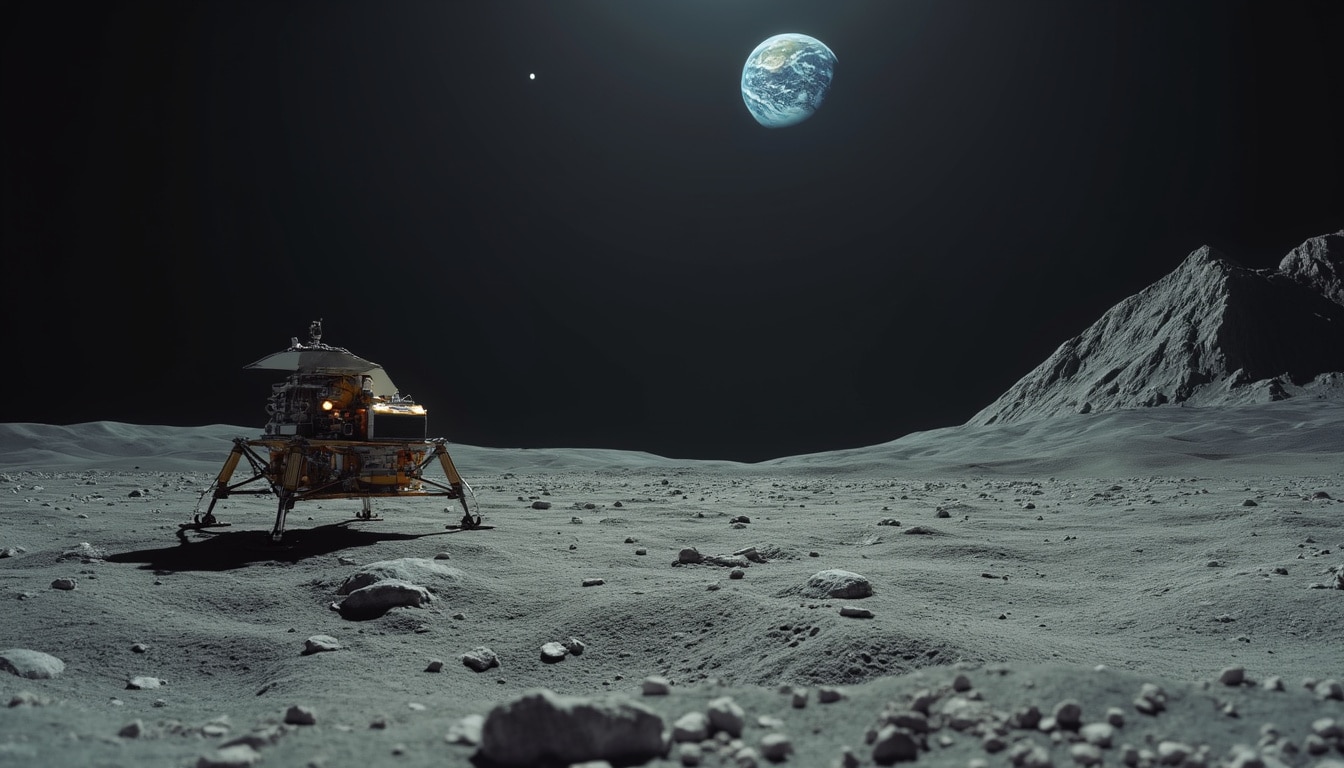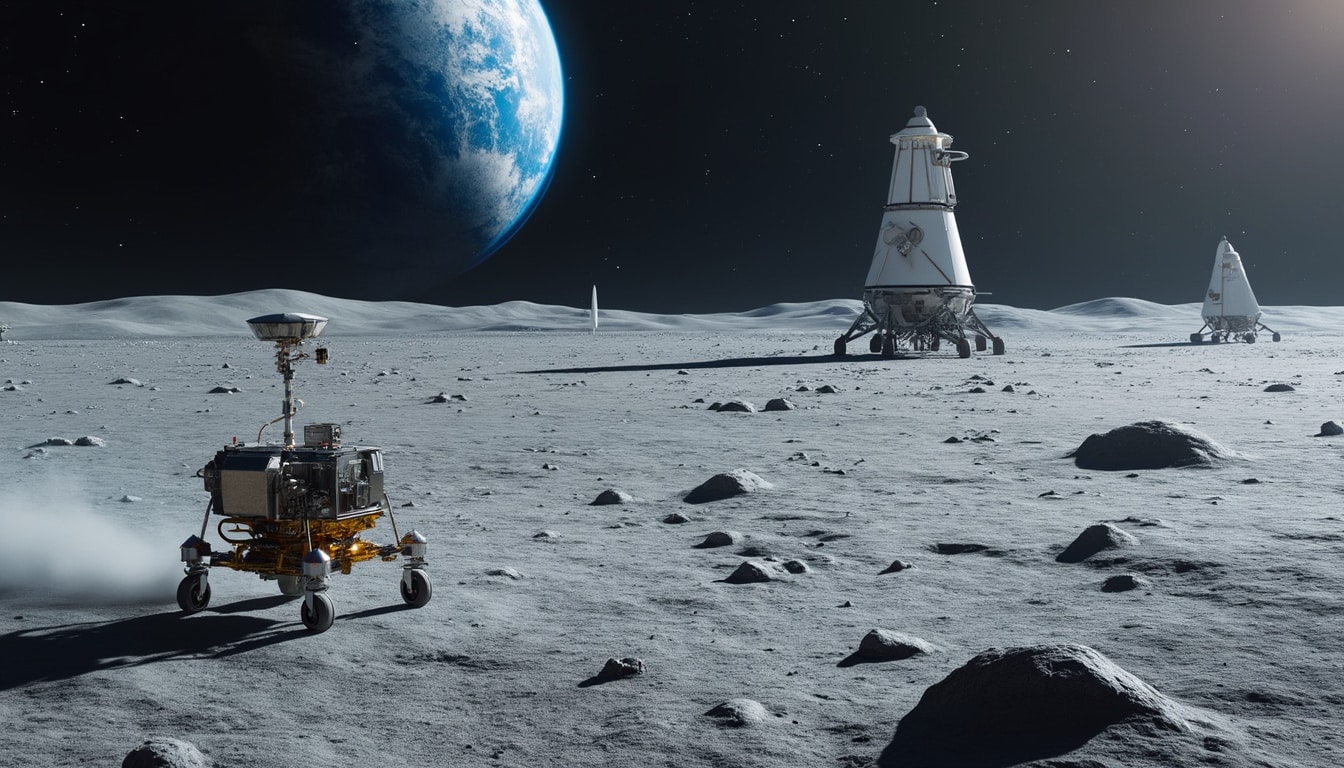The recent unveiling of high-definition images from NASA marks a significant milestone in lunar exploration. Captured by the private lander Blue Ghost, these stunning visuals showcase a breathtaking sunset on the Moon, offering profound insights into the mysterious phenomenon known as lunar horizon glow. This historic event highlights the collaborative efforts between NASA and private aerospace companies such as Firefly Aerospace, supported by a substantial investment aimed at advancing lunar exploration and paving the way for the Artemis program, which plans to bring humans back to the Moon by 2027.
These photographs, taken near the Mons Latreille region on the Moon, reveal not only the beauty of the celestial body but also present the potential for further scientific inquiry into the phenomena observed. As the mission concludes, specialists are eager to analyze and compare this data with previous lunar observations, aiming to unlock new understanding about our closest celestial neighbor. With such exciting developments on the horizon, the future of lunar exploration looks brighter than ever.
The Journey of the Blue Ghost Lander
The Blue Ghost lander embarked on its journey to the Moon on January 15, 2025, launched by a SpaceX Falcon rocket. This spacecraft, roughly the size of a hippopotamus, successfully completed its mission on March 2, 2025, landing upright in the Mare Crisium region of the lunar surfaces. This operation not only marks a milestone for Firefly Aerospace but also emphasizes the evolving landscape of commercial space exploration and the critical role that private companies play alongside established giants such as NASA, Blue Origin, Lockheed Martin, Boeing, and Northrop Grumman.

Technological Innovations and Scientific Contributions
This mission aimed not only to demonstrate the technical capabilities of the Blue Ghost lander but also to carry out significant scientific experiments. Among the instruments on board was a lunar soil analyzer, capable of assessing the composition of the Moon’s surface. This technology enables researchers to gather data on the Moon’s geological history, enhancing our understanding of the solar system’s formation and evolution.
Furthermore, the lander included a radiation-tolerant computer designed to operate in the Moon’s harsh environment, allowing for the collection and transmission of crucial data back to Earth. Firefly Aerospace Chief Executive Jason Kim expressed pride in this mission, highlighting its potential to reshape textbooks and inspire future generations of scientists and engineers.
Revelation of Lunar Horizon Glow
One of the most fascinating aspects of the mission was the capture of lunar horizon glow alongside the sunset images. This phenomenon was first observed by Eugene Cernan during the Apollo 17 mission in 1972, and recent observations suggest that it results from tiny dust particles in the Moon’s thin atmosphere becoming illuminated by the Sun during sunrise and sunset. The two stunning images taken by the Blue Ghost lander provide fresh insights into what causes this enchanting glow, allowing scientists to analyze the atmospheric conditions and dust distributions around the lunar surface.
Comparative Analysis with Historical Data
Scientists are now focused on the comparative analysis of the newly captured images with historical data from Apollo missions to draw deeper conclusions about the lunar environment. The lunar horizon glow phenomenon not only has aesthetic appeal but also plays a critical role in understanding the Moon’s atmospheric dynamics.
As the mission concludes, specialists continue to discuss how the data acquired by Blue Ghost offers a unique glimpse into ongoing lunar mysteries. As Joel Kearns, NASA’s deputy associate administrator for exploration, stated, “The images themselves are beautiful… but now it’s time for the specialists in the field to examine them.” The blend of artistic beauty and scientific inquiry presents a thrilling chapter in lunar studies.
Future Implications for Lunar Exploration
The successful landing of the Blue Ghost and the data collected paves the way for future lunar missions that aim to explore various aspects of the Moon’s surface. The growing collaboration between NASA and private companies signifies a shift in space exploration paradigms, where cost-effective solutions are paramount to achieving advanced aerospace goals. This approach not only fosters commercialization but also accelerates the pace of exploration, allowing ventures like Planet Labs and Virgin Galactic to emerge alongside traditional giants.

Next Steps in the Artemis Program
The Artemis program, funded through a $2.6 billion investment from NASA, seeks to set the stage for returning humans to the Moon. Utilizing the advancements showcased by the Blue Ghost lander, future missions will incorporate new technologies and scientific findings that enhance our understanding of the lunar environment and how it could support human life.
Innovative partnerships with companies like Huawei, Sony, and others involved in aerospace technologies are pivotal for ensuring the success of these ambitious missions. With the goal of establishing a sustainable human presence on the Moon by 2027, the synergy between governmental space agencies and private aerospace ventures is crucial to overcoming the challenges posed by such an unprecedented venture.
Public Interest and Engagement
The unveiling of high-definition images has spurred public interest and engagement in lunar exploration. Citizens are now more aware and intrigued by the prospects of what lies beyond our planet. The rich imagery of the lunar sunset has made waves across various media platforms, allowing for discussions surrounding the missions and the scientific processes involved.
Social Media Impact and Scientific Outreach
Social media outlets and news platforms have played a pivotal role in disseminating information about the Blue Ghost mission, engaging a broader audience in the scientific dialogue. Platforms such as Instagram, Twitter, and Facebook have hosted discussions under hashtags related to lunar exploration, allowing enthusiasts and experts alike to share insights and awe about this monumental achievement.
| Mission Aspect | Details |
|---|---|
| Launch Date | January 15, 2025 |
| Landing Date | March 2, 2025 |
| Location | Mare Crisium, near Mons Latreille |
| Key Experiments | Lunar soil analysis, radiation-tolerant computer |
| Funding Entity | NASA’s $2.6 billion investment |
As the lunar exploration landscape evolves, the potential for future discoveries continues to grow. The synergy between various companies and NASA paves the way for groundbreaking advancements in our understanding of the universe.




Leave a Reply